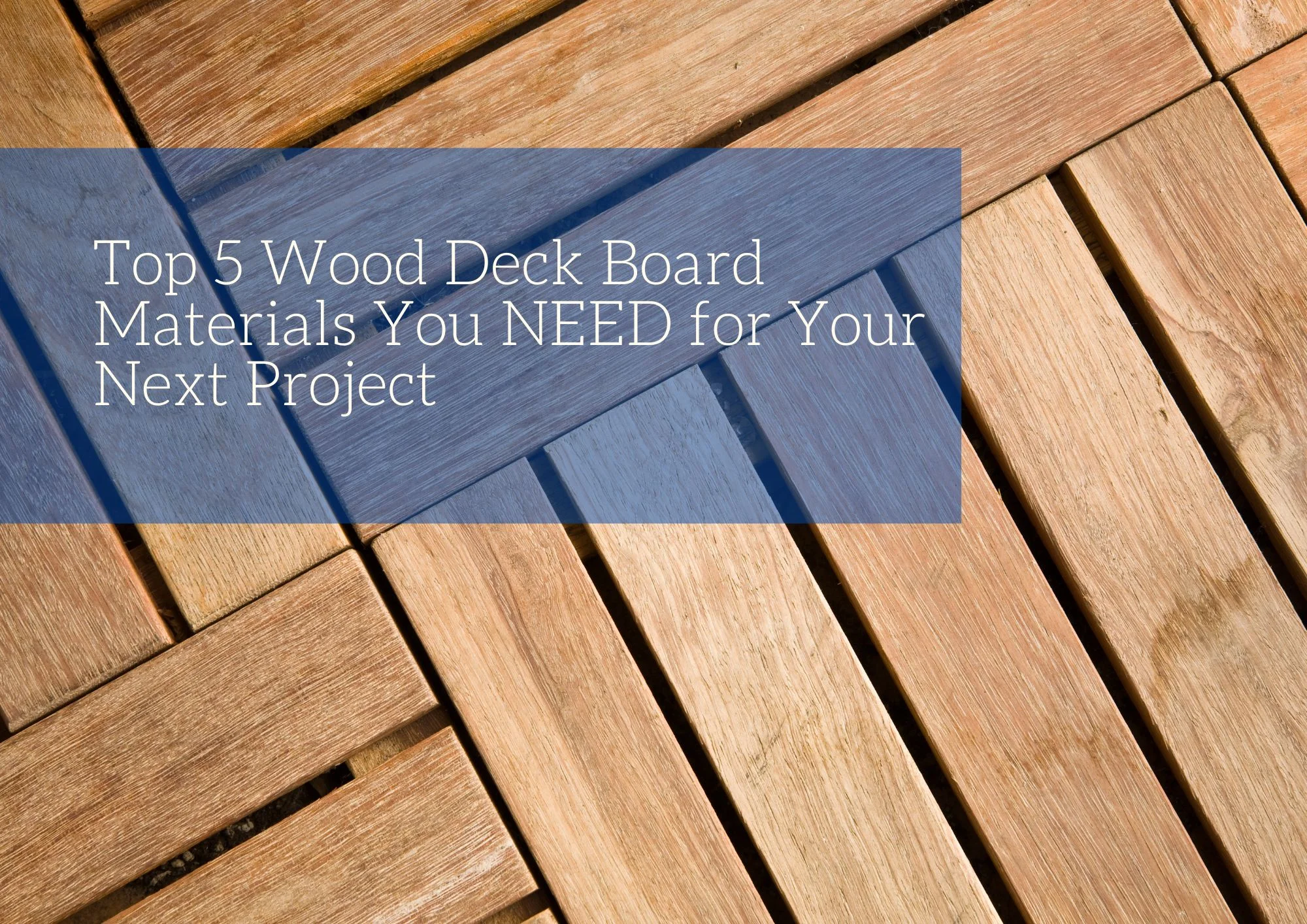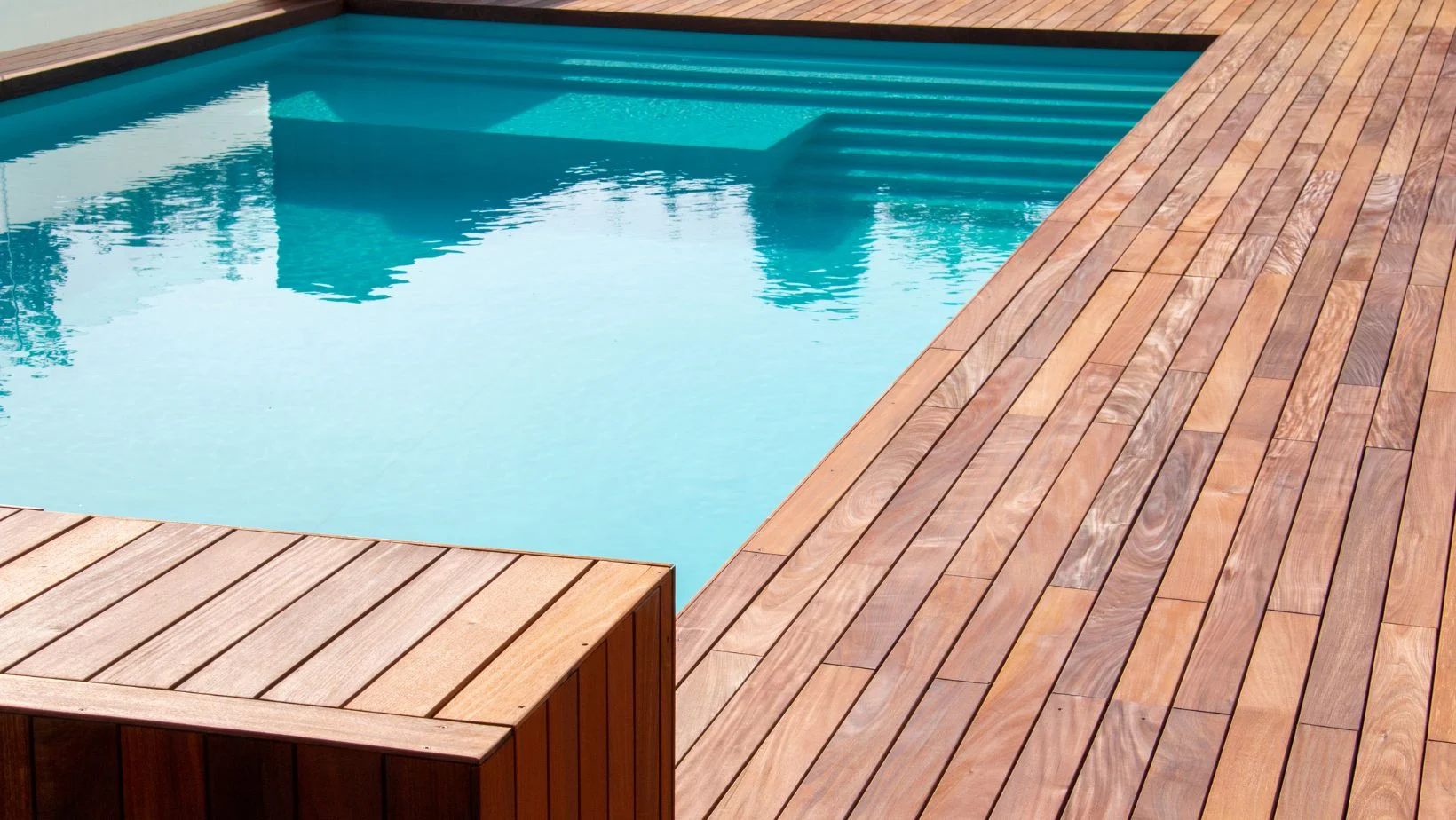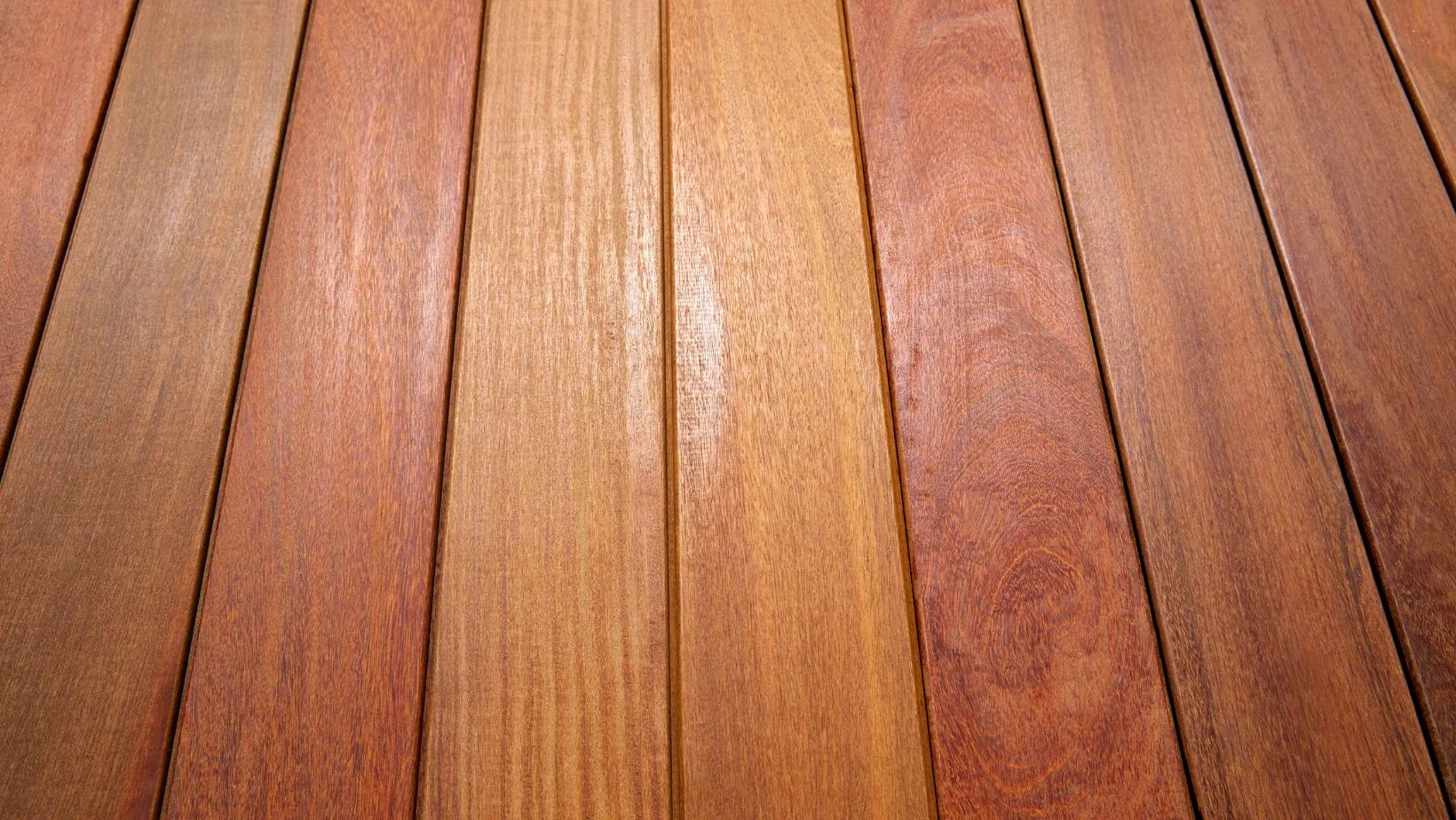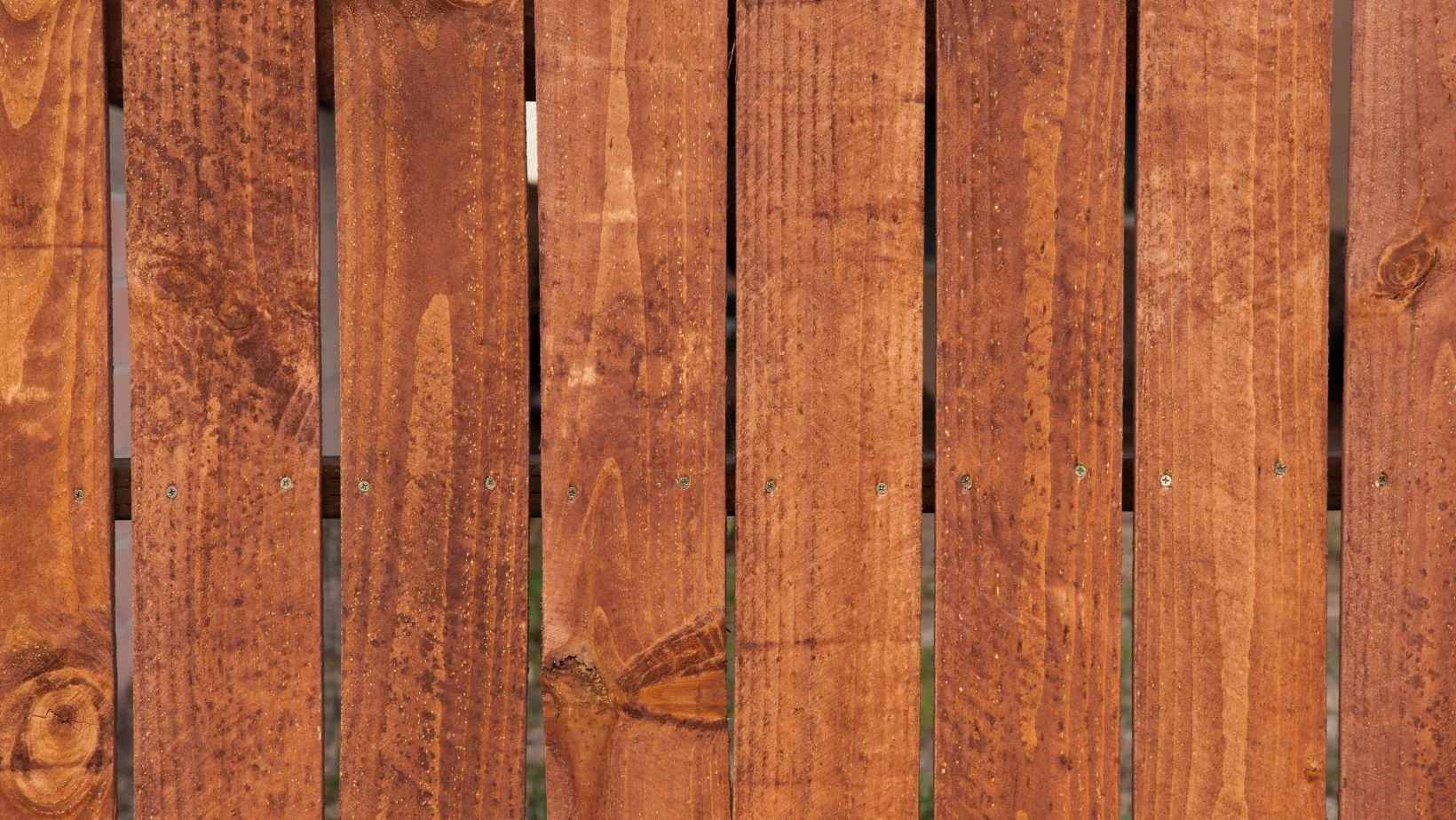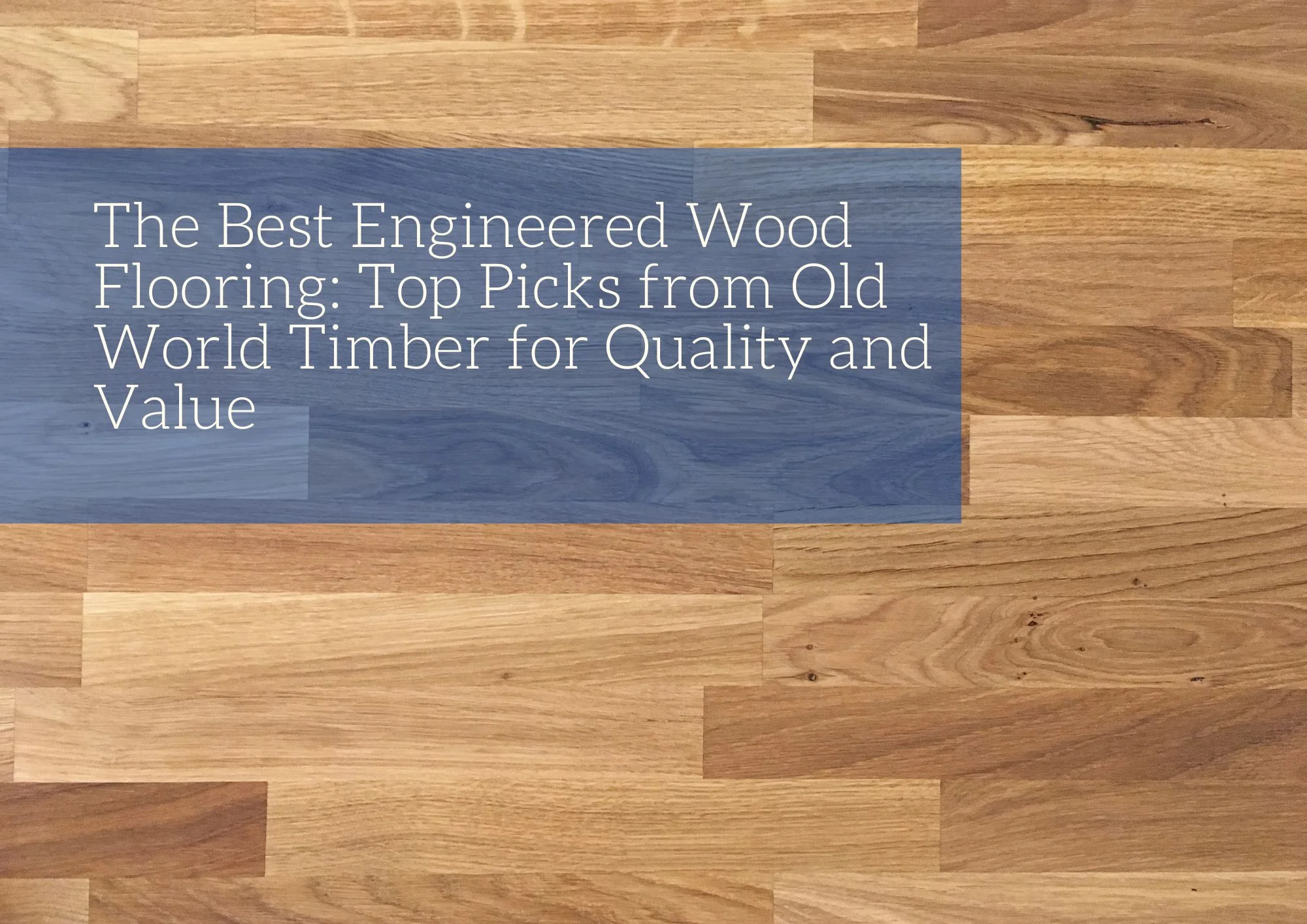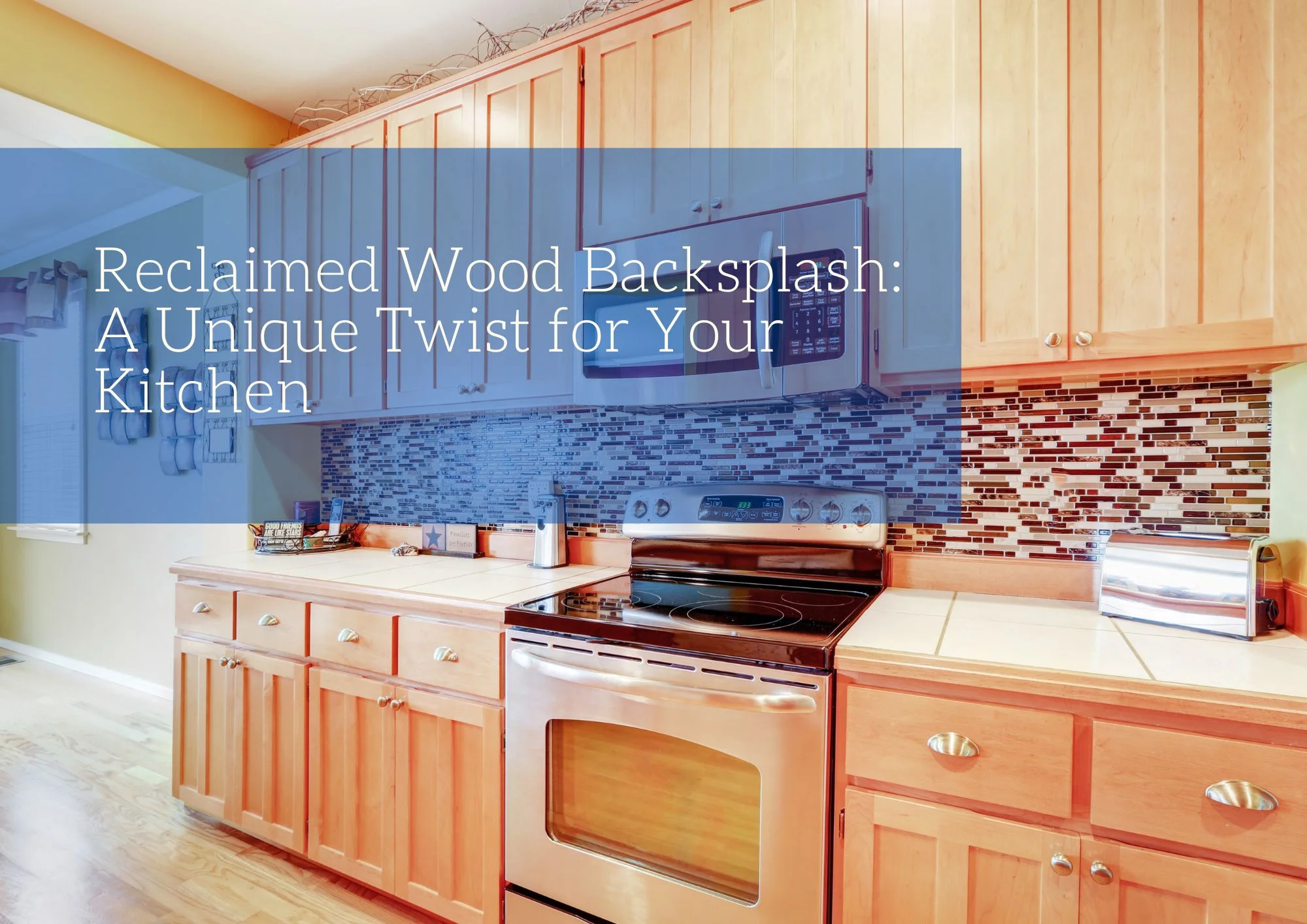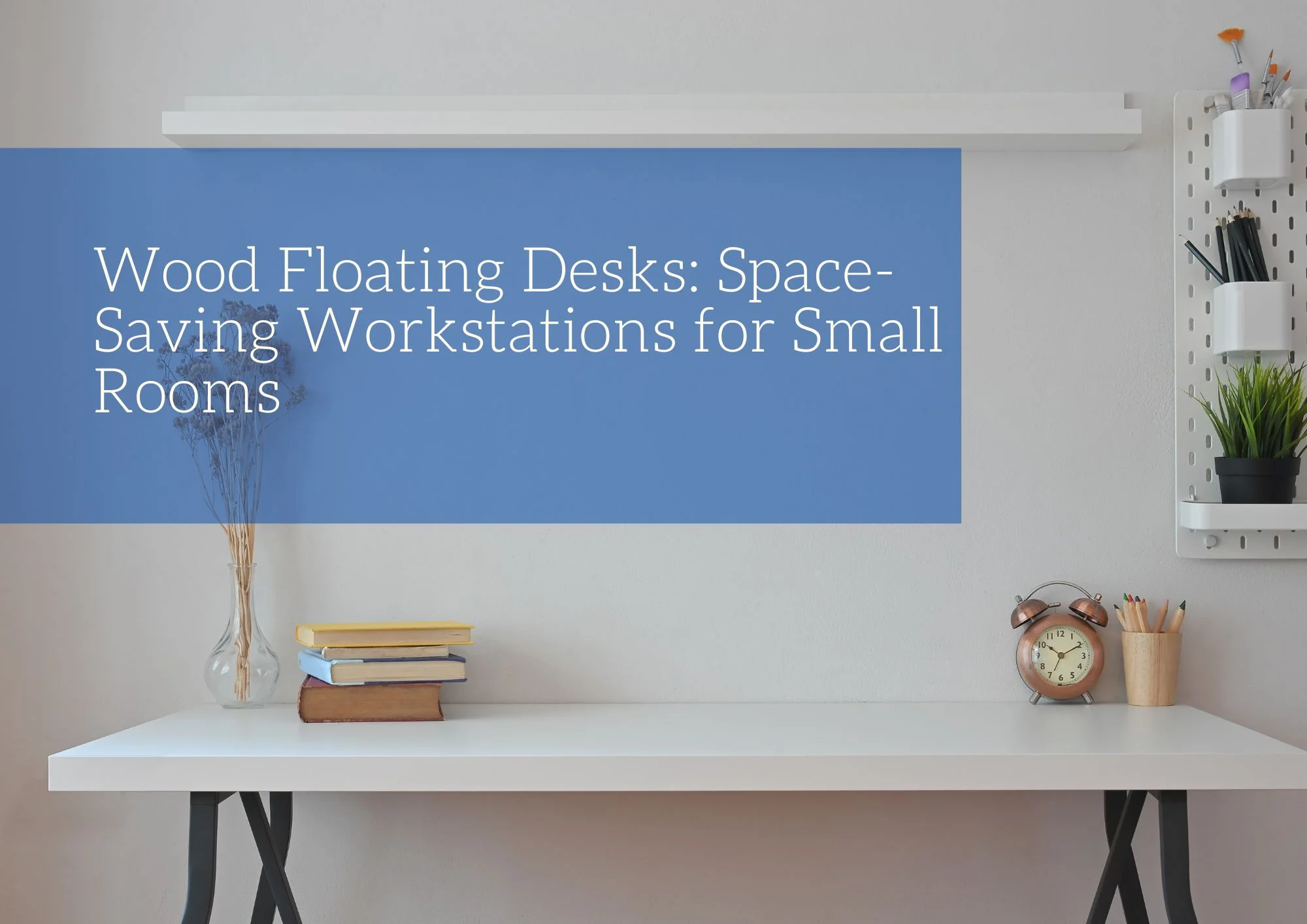Creating the perfect outdoor space involves selecting the right materials, especially when it comes to your deck. The choice of deck board material not only impacts the aesthetic appeal but also the longevity, maintenance, and overall enjoyment of your deck. To help you make an informed decision, we’ve compiled a list of the top five wooden deck board materials you need to consider for your next project.
Redwood
Redwood, once commonly used for fences, play structures, and decks, is becoming increasingly scarce. However, when available, it remains an excellent choice for deck flooring. The heartwood of redwood, which is more durable and visually appealing, costs about 25% more than the less attractive sapwood. One advantage of redwood is that it can be maintained without the use of chemical preservatives.
Redwood weathers into a beautiful, rich red hue that adds a distinctive charm to any deck. However, due to its increasing scarcity on the open market, it has become a less accessible option for decking projects. Additionally, over time, redwood can develop splinters, making it less suitable for walking barefoot.
Pros and Cons of Redwood Decking
Pros
- Natural Preservatives: Contains natural oils that help resist decay and insects.
- Colorful and Appealing: Weathers into a rich, attractive red hue.
- Good Strength: Provides strong support and stability.
Cons
- Difficult to Obtain: Increasingly scarce on the open market.
- Expensive: Higher cost compared to other decking materials.
- Splintery: Can develop splinters over time.
Ipe Wood
Ipe, also known as Brazilian Walnut, Tabebuia serratifolia, or Pau d’arco, is a highly sought-after exotic hardwood renowned for its superior qualities. This beautiful dark-brown wood requires minimal upkeep to maintain its appearance. It is known for its solidity and strength, making it extremely resistant to wear and tear. Ipe is also resistant to splintering and breaking, making it a safe option for outdoor use even under bare feet. Additionally, Ipe’s high resistance to moisture and UV radiation reduces fading and degradation over time. However, Ipe can be quite expensive, and its density can make installation challenging, often requiring specialized tools and fasteners. Furthermore, to ensure sustainability, it is important to source Ipe from certified, managed forests.
Because of its extreme hardness, Ipe can be challenging to work with and can dull tools quickly. For this reason, professional decking companies are often ideal for installing Ipe wood. Installation requires clips to secure the boards to the joists, which adds to the overall cost. Additionally, unless you live near an Ipe source, high transportation costs will further increase the final price of the product.
Pros and Cons of Ipe Wood for Decking
Pros
- Good Resale Value: Adds significant value to your property.
- Low Maintenance: Maintains its appearance naturally with minimal upkeep.
- Exceptional Strength: Extremely durable and resistant to wear and tear.
Cons
- Expensive: Higher cost compared to other decking materials.
- Difficult to Work With: Due to its extreme hardness, it is difficult to cut and drill, often requiring specialized tools.
- Limited Availability: It may not be readily available at local retailers, leading to higher transportation costs.
Pressure-Treated Wood
Pressure-treated wood stands as the quintessential low-cost decking material, offering versatility for various deck sizes and configurations.
Softwoods like Douglas Fir, Hemlock, Southern Yellow Pine, and Ponderosa Pine, while budget-friendly, are prone to rapid deterioration and attract termites and carpenter ants.
Despite their availability and affordability, pressure-treated deck boards are susceptible to splintering and splitting if not maintained properly. Caution is advised when cutting pressure-treated boards, and applying a sealing preservative to the cut ends is recommended.
For installation, concealed deck fasteners are an efficient method. These secure boards discreetly along the sides with specialized jigs ensuring precise placement just below the board surface.
Pros and Cons of Pressure-Treated Wood
Pros
- Easy to Work With: Soft enough for drilling and cutting, it is manageable for DIY projects.
- Accessibility: Readily available at local home centers or lumber yards.
Cons
- Treatment of Ends Required: Cut ends of pressure-treated wood should be treated to maintain durability and prevent decay.
Hem-Fir Wood
Due to the widespread availability of inexpensive pressure-treated wood and other decay-resistant materials, untreated dimensional lumber like hem-fir is seldom used as decking boards. However, due to its affordability, hem-fir can still be utilized with proper precautions against insects and deterioration.
Hem-fir, comprising Western hemlock and Amabilis fir, shares similar characteristics and appearance, making them interchangeable for timber manufacturers. Hence, a stack labeled as hem-fir may consist of both hemlock and fir boards.
Recognized for its strength, durability, and adaptability, hem-fir is resistant to rot and insects, making it suitable for outdoor applications. Despite being the least expensive option, hem-fir boasts a robust structure, allowing for a wide joist distance span.
For those desiring a deck with a solid painted hue, hem-fir is an excellent choice. However, preserving hem-fir requires careful attention. Prompt treatment with a preservative or priming and painting is necessary. Unlike factory-treated pressure-treated wood, site-treated hem-fir demands ongoing maintenance.
Pros and Cons of Hem-Fir Decking
Pros
- Accessibility: Hem-fir is readily available at most lumber yards and home centers.
- Affordability: One of the most inexpensive options for decking materials.
- Good Joist Spans: Hem-fir provides excellent joist spans, making it suitable for various deck designs and layouts.
Cons
- Poor Preservation: Hem-fir lacks natural resistance to decay and insects, requiring regular treatment for preservation.
- Splinters: Without proper maintenance, hem-fir is prone to splintering over time, potentially posing safety hazards especially for households with children or pets.
- Painting Required: Hem-fir often needs to be painted or treated with a protective finish to enhance its durability and appearance.
Red Cedar
Red cedar is most commonly used for fence planks but is also an excellent choice for decking. Its natural oils allow it to weather naturally, similar to redwood, without requiring treatment. However, if desired, red cedar can be painted or stained. Even when left untreated, red cedar maintains its structural integrity for many years.
Initially, red cedar boasts a rich reddish-brown hue, which gradually fades to an attractive silver-gray within a few weeks. To retain its original color and prevent graying, applying a preservative is necessary. The wood features a fine, straight grain with a homogeneous texture, enhancing its visual appeal.
Most kiln-dried red cedar is available in one-inch thicknesses, while two-inch thick kiln-dried cedar is harder to find. Despite this, red cedar remains a popular choice for deck flooring due to its high strength-to-weight ratio.
Pros and Cons of Red Cedar Decking
Pros
- Cost-Effective: Falls into the low to moderate price range.
- Attractive Appearance: Maintains a beautiful crimson look when properly sealed.
- Pleasant Aroma: Has an appealing scent when recently cut.
- Good Strength-to-Weight Ratio: Reliable and durable for deck flooring.
Cons
- Splintery: It can become splintery over time and requires regular maintenance.
- Limited Dimensions: It is difficult to obtain in all flooring measurements, especially in thicker sizes.
Selecting the right deck board material depends on your budget, aesthetic preferences, and how much maintenance you’re willing to undertake. Whether you opt for the budget-friendly pressure-treated lumber, the natural charm of cedar or redwood, the exotic allure of tropical hardwoods, or the low-maintenance convenience of composite decking, there’s a perfect choice for every homeowner. Investing in high-quality materials ensures that your deck will be a beautiful and functional outdoor retreat for years to come.


